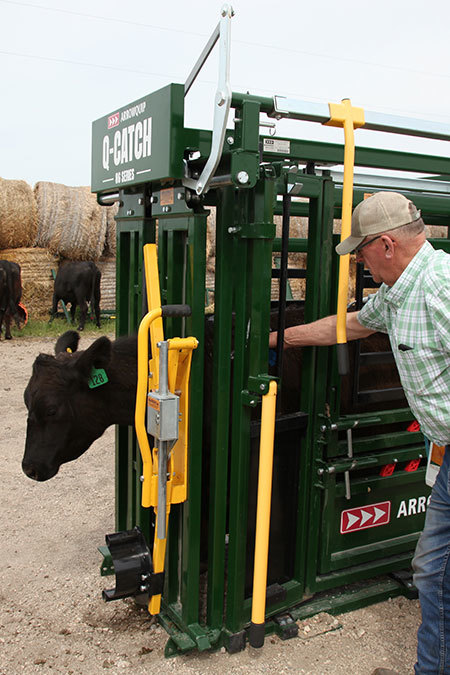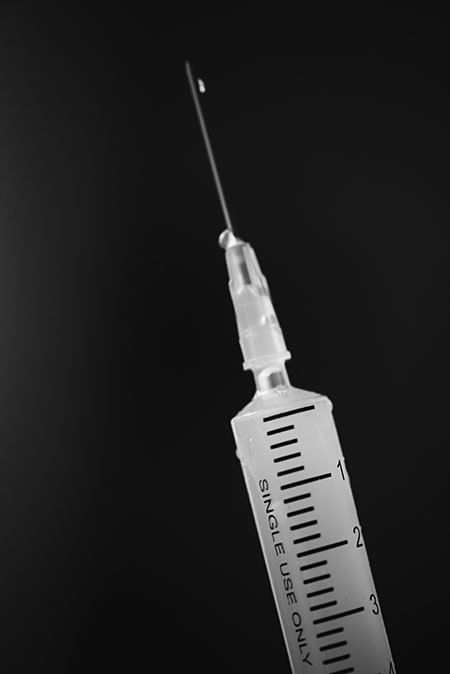Are You Vaccinating Your Cattle Properly?
Focus on selecting vaccines tailored to your herd’s needs with guidance from your veterinarian.
Go Back to All BlogsPosted on: August 12, 2019
Updated on: December 26, 2025
Author: Liane Carter
SHARE:
Vaccination is an important part of cattle herd health. Although most cattle producers have given numerous vaccines, a refresher on the best practices is always beneficial. The Beef Quality Assurance (BQA) program includes proper vaccination and injection techniques. Injections are administered for a number of purposes, including vaccines, antibiotics, other medications, or injectable vitamins and minerals.
Reactions and adverse side effects also increase when vaccines are improperly administered. Residues that create a lesion at the injection site are the most common. With that in mind, here are the best practices for vaccinating cattle.
Choose the correct vaccines. Do you know which vaccines your cattle need? The Merck Veterinary Manual provides some guidelines. Develop a herd health plan and vaccine schedule specific to your cattle with the assistance of your veterinarian. Protocols are designed based on prevalence of disease, cost of vaccination versus treatment, and how well the vaccine works.
Read the label before administering any injection, especially a vaccine. Some drugs have multiple forms, for example intramuscular (IM) versus subcutaneous (SQ). Check the expiration date, and look for new or different instructions.

Injection sites matter. All SQ and IM injections should be given in the neck. Never give injections in the hindquarters. It used to be a popular place for injections because the hindquarters are easy to access. But, hindquarter injections can create abscesses and damage meat. New and improved cattle chute systems allow neck access. These chute systems are safer for stockmen and women to administer injections in the neck area, and, more importantly less stressful for cattle. The loose skin on the front leg of calves can be used as a secondary injection site if needed.
Keep it clean. Proper sanitation helps reduce and avoid infections. The needle, syringe, hide, and hands of the person administering the injection should be clean. Wear disposable gloves to aid in sanitation and protect from medication residues. The hide should be sanitized with an alcohol wipe and dried prior to injection. Needles should be sterile and kept in the needle sheath until use. Change needles frequently to keep them clean and sharp. Needles get blunt after a few uses.
Never use disinfectants on your needles or syringes. Disinfectants can kill the live organisms in a Modified Live Vaccine, rendering the vaccine useless. Needles and syringes come in sterile packages when purchased. Invest in enough of each for the size of your herd to eliminate cleanliness questions.
Use the correct needle. Size and length depend on the product being administered and the injection site. Lower gauge needles, for example a 16-gauge, is actually a larger needle, and should be used on mature cattle. An 18-gauge needle is more appropriate on a calf. Needle length depends on the type of injection and syringe used. A half-inch needle is standard. The gauge may also depend on the fluid consistency being injected.
Consider a vaccination gun. A vaccination gun will make the process easier for you, and reduce potential errors. Sterilize the gun before each use. Check gun calibration and operation prior to heading to the chutes to vaccinate animals.
Don't mix vaccines. Mixed vaccines were advocated in the past as a way to reduce injection sites. However, mixing the wrong vaccines can inactivate them, again making the vaccines useless. You may purchase a five in one or seven and one vaccine. Vaccines mixed by the pharmaceutical company do not pose an inactivation risk.
Space injections. Vaccines should be spaced out on both sides of the neck if the animal is receiving multiple injections at one time. Adverse side effects including residues or an abscess are more likely when clumping injections together. Newer chute systems offer neck access on both sides of the animal. Use both chute access areas to your advantage when spacing out injections.

Take your time. Slowing down can reduce vaccination mistakes. Pinch the neck and create a tent to inject the fluid under the skin of then neck when giving SQ injections. The correct size needle and a slow, deliberate pace will ensure the needle does not pop through the tent and waste the vaccine. IM injections must go through the skin, fatty tissue, and then into the muscle. Insert the needle at a 90-degree angle to the skin surface. Always pull back on the syringe prior to administering the vaccine to ensure that the needle was not accidentally injected intravenously.
Develop a system. The vaccination system should include where on the animal and how injections are given. Consistency leads to fewer adverse reactions. Maintain proper records for all vaccines or injections that animals receive. Label or color-code syringes to avoid mixing vaccines or injection materials, as this can also create adverse effects for the cattle.
Properly dispose of waste. Dispose of used needles in a sharps container.
Consult a veterinarian with specific questions or concerns on how to vaccinate your cattle, or about which vaccines and injections to administer. Vaccination is a foundation element in your herd health program and part of the BQA program. Vaccination can be a low stress process for you and your cattle when adhering to best practices.
References
Giving Cattle Injections? Do it Right
Intramuscular (IM) Injection in Cattle
Lowline Cattle Association: How to Vaccinate Cattle Handout
Merck Veterinary Manual
Vaccinations for the Beef Cattle Herd